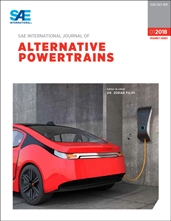In order to determine the overall fuel economy of a plug-in hybrid electric vehicle (PHEV), the amount of operation in charge depleting (CD) versus charge sustaining modes must be determined. Mode of operation is predominantly dependent on customer usage of the vehicle and is therefore highly variable. The utility factor (UF) concept was developed to quantify the distance a group of vehicles has traveled or may travel in CD mode. SAE J2841 presents a UF calculation method based on data collected from travel surveys of conventional vehicles. UF estimates have been used in a variety of areas, including the calculation of window sticker fuel economy, policy decisions, and vehicle design determination.
The EV Project, a plug-in electric vehicle charging infrastructure demonstration being conducted across the United States, provides the opportunity to determine the real-world UF of a large group of privately owned Chevrolet Volt extended range electric vehicles. Using data collected from Volts enrolled in The EV Project, this paper compares the real-world UF of two groups of Chevrolet Volts to estimated UF's based on J2841.
The actual observed fleet utility factors (FUF) for the MY2011/2012 and MY2013 Volt groups studied were observed to be 72% and 74%, respectively. Using the EPA CD ranges, the method prescribed by J2841 estimates a FUF of 65% and 68% for the MY2011/2012 and MY2013 Volt groups, respectively. Volt drivers achieved higher percentages of distance traveled in EV mode for two reasons. First, they had fewer long-distance travel days than drivers in the national travel survey referenced by J2841. Second, they charged more frequently than the J2841 assumption of once per day - drivers of Volts in this study averaged over 1.4 charging events per day. Although actual CD range varied widely as driving conditions varied, the average CD ranges for the two Volt groups studied matched the EPA CD range estimates, so CD range variation did not affect FUF results.
